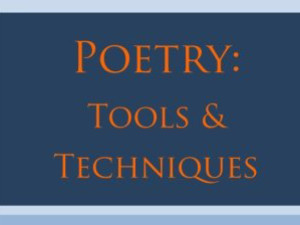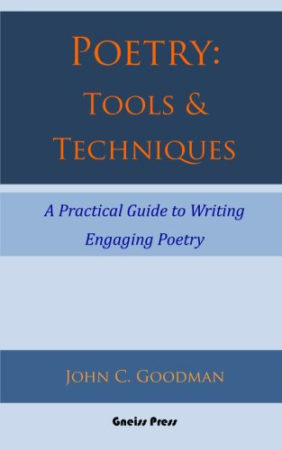
This post contains affiliate links that earn commissions.
I have found it quite challenging to find good books on the craft of poetry writing. My favorite resource, which is also the most comprehensive, is Perrine’s Sound and Sense. But that’s a costly book because it’s used in college-level poetry courses. For years, I’ve kept up a search for a simpler, more affordable book on the nuts and bolts of writing poetry. And I’ve finally found it.
Poetry: Tools & Techniques: A Practical Guide to Writing Engaging Poetry is a slim volume at 130 pages. Most of the thirty-one chapters contain just two or three pages. You could easily read this book over the course of a month, perusing a few pages each day. I ordered the paperback for under $10, which is more than reasonable, considering the value of the contents.
Many of the short chapters cover concepts that could warrant an entire book of their own, but this is not an in-depth textbook. It’s a light and engaging read, packed with insight and information. Poetry: Tools and Techniques is a perfect starting place for young and new poets who want to expand their knowledge and understanding of poetry, but it also makes a great refresher text for more experienced poets.
Some of my favorite chapters deal with the idea of developing a poetic:
A poetic is a set of guidelines or parameters or restraints or constraints that direct the writer’s intention. The poetic determines the placement on the page of every word, every line break, every punctuation mark, every space.
A poetic can be part of a movement, such as the beat poets, or it can be one poet’s personal style and standards for writing poetry:
Serious poets don’t simply write what they feel, they work with a poetic, they write what they feel with intention.
The book also covers more conventional topics in the realm of poetry, and the chapter titles make it fast and easy to find any information you’re seeking by topic. Here are just a few topics you’ll find in the table of contents: “Revising and Polishing,” “Rhythm and Flow,” “Assonance and Alliteration,” “Repetitions,” “Line Breaks and Form,” “Simile and Metaphor,” “Imagery,” and “Structuring a Poem.”
The final few chapters of this handy little book are similar to indices, starting with chapter twenty-seven, which is titled “The Development of Modern Poetics.” This chapter is a bit longer than the others and offers a brief but comprehensive recent history of poetry. The next chapter is a list of poetic constructions, such as the use of nouns as verbs, the poem written entirely in lower case, and the breaking away from the left margin. Chapter twenty-nine offers a list of literary terms and definitions (which is always useful) and is followed by a chapter on parts of speech that is much more enlightening than it sounds. The final chapter provides a list of poetics, mostly poetic movements in the English language throughout recent centuries.
One of my tests for any book on the craft of writing is to ask this simple question: Does it make me want to write? In this case, the answer was yes. I frequently had the urge to set the book aside and tinker with my own poetry. Some chapters made me want to write fresh poems, while others made me want to scour my drafts and polished pieces to see how I’d used the various concepts presented.

Pick up your copy today!
The post A Handy Book for Poets – Poetry: Tools & Techniques: A Practical Guide to Writing Engaging Poetry first appeared on Writing Forward.
Go to Source
Author: Melissa Donovan